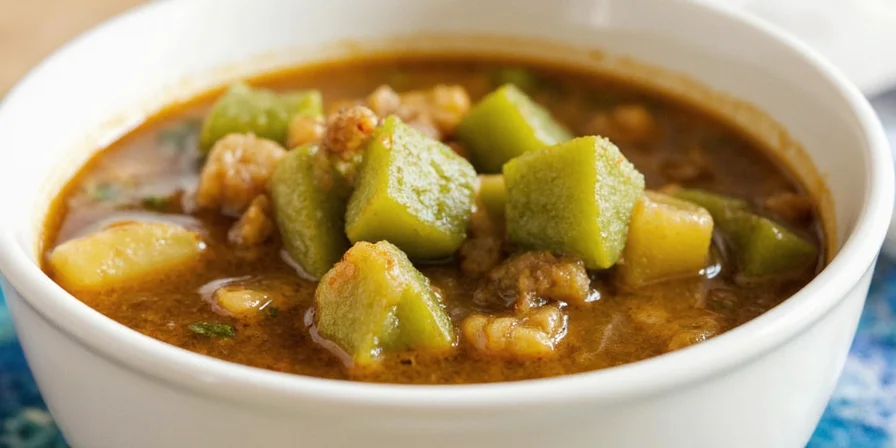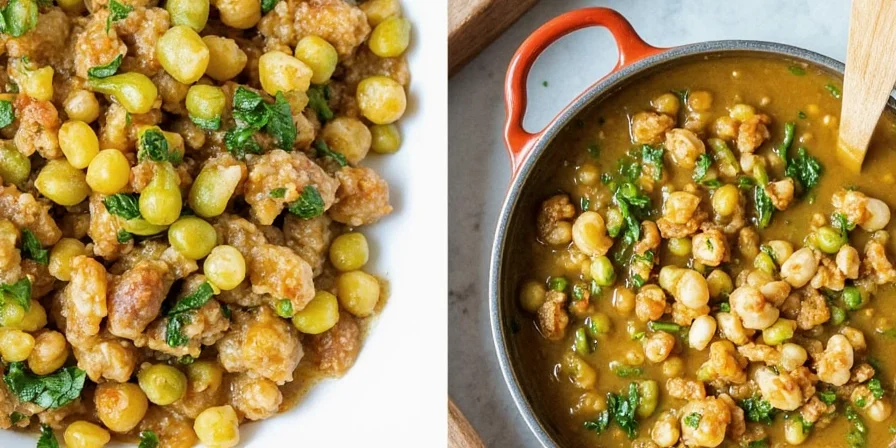
Table of Contents
- What Makes Green Chile Stew So Special?
- From Mexico to Morocco: A World of Flavor
- Cultural Significance: Beyond the Heat
- Pro Tips for Perfecting Your Stew Every Time
- Chile Spice Profiles You Should Know
- Fusion Flavors: Mixing Tradition with Adventure
- How to Store and Reheat Like a Pro
- Vegan Options Without Sacrificing Flavor
- Frequently Asked Questions
- Final Thoughts: Simmer, Spice, Savor
What Makes Green Chile Stew So Special?
Let’s get one thing straight—green chile stew is not just soup. It’s a simmered celebration of spice, smoke, and sometimes soul. Whether it's the heart-pounding heat of a New Mexican posole verde or the earthy warmth of an Ethiopian doro wat-inspired green stew, this dish transcends borders.
Designed specifically for home cooks and culinary adventurers seeking authentic global techniques, this guide transforms ordinary stew preparation into a cross-cultural exploration. You'll gain actionable methods to replicate regional authenticity while adapting recipes to modern kitchens.

Why does it work so well? Because green chiles are nature’s flavor bombs—they bring heat, tang, sweetness, and smokiness all in one bite. But how you use them—and what spices you pair them with—can take your stew from backyard comfort food to global cuisine royalty.
From Mexico to Morocco: A World of Flavor
Let’s take a quick world tour through green chile stew traditions. Different cultures have different takes on how to handle that fiery green goodness:
| Country | Signature Ingredients | Heat Level (on Scoville Scale) | Key Spices |
|---|---|---|---|
| Mexico | Poblano, Anaheim, Jalapeño | 1,000–50,000 SHU | Cumin, coriander, garlic, oregano |
| New Mexico | Hatch green chile | 1,000–30,000 SHU | Smoked paprika, dried oregano |
| India | Green bird’s eye chili | 50,000–100,000 SHU | Mustard seeds, curry leaves, turmeric |
| Ethiopia | Green berbere paste | Varies | Fenugreek, ginger, cardamom |
| Morocco | Harissa-infused stew | 5,000–100,000 SHU | Saffron, cinnamon, cumin |

Now imagine combining these styles—or even creating your own! Think Moroccan-spiced Hatch stew or a Thai-inspired green curry stew. The world is your pepper pod!
Cultural Significance: Beyond the Heat
Green chile stews serve as edible cultural archives. New Mexico's Hatch chile harvest festivals celebrate agricultural heritage through community roasting events, while Ethiopia's berbere-based stews preserve spice route traditions using techniques unchanged for centuries. Unlike generic recipe collections, this analysis reveals how geography shapes flavor profiles: high-altitude Andean stews incorporate quinoa for texture, while coastal variants use citrus to balance humidity's effect on spice perception. Recognizing these nuances helps cooks honor origins while innovating responsibly.
Pro Tips for Perfecting Your Stew Every Time
- Roast those chiles! For a deeper flavor, char them over a flame or under the broiler. Don’t skip peeling them—it removes bitterness and gives that silky texture.
- Brown the meat first if using protein like pork or chicken. This adds richness and complexity to your broth.
- Add acid at the end, like lime juice or vinegar, to brighten up the flavors after hours of simmering.
- Simmer low and slow for at least 45 minutes. Letting the stew rest overnight can actually improve the taste the next day.
- Taste as you go and adjust seasoning. Remember: salt, spice, and acidity must be balanced.
Chile Spice Profiles You Should Know
Here’s a cheat sheet of popular green chiles and their heat levels and flavor profiles:
| Chile | Scoville Units | Flavor Notes | Best Use |
|---|---|---|---|
| Hatch Green | 1,000–30,000 | Earthy, vegetal, slightly sweet | Southwestern stews, salsas |
| Jalapeño | 2,500–8,000 | Grassy, tangy, with a bit of heat | Tex-Mex soups, garnish |
| Poblano | 1,000–2,000 | Mild, earthy, complex | Rajas con crema, stuffed dishes |
| Bird’s Eye | 50,000–100,000 | Fiery, citrusy, floral | Thai curries, Indian pickles |
| Anaheim | 500–2,500 | Mildly sweet, grassy | Mild stews, casseroles |
Fusion Flavors: Mixing Tradition with Adventure
If you’re feeling brave, why not try some fusion ideas? Here are a few spicy experiments worth trying:
- Japanese-Korean Hybrid: Add miso paste and gochujang to your stew base. Garnish with scallions and sesame seeds.
- Italian Fusion: Toss in roasted red peppers, basil, and Parmesan rind. Stir in at the last 30 minutes of cooking.
- African-American Creole: Add smoked sausage, thyme, and bay leaves. Simmer with a splash of hot sauce and browned onions.
- Mediterranean Twist: Blend in sun-dried tomatoes, olives, and a hint of harissa. Top with feta cheese crumbles.

How to Store and Reheat Like a Pro
One of the best things about green chile stew? It gets better with age. Here’s how to store and reheat without losing its kick:
- Refrigerate: Keep in an airtight container for up to 4 days.
- Freeze: Cool completely before freezing in portions. Lasts up to 3 months.
- Reheating: Gently warm on the stove or microwave. Add a splash of broth or water to loosen it up.
- To freeze chiles: Roast and peel them, then freeze in a bag. They’ll last up to a year and can be added frozen to future batches.
Vegan Options Without Sacrificing Flavor
Don’t eat animal products? No problem! Here’s how to make a plant-powered green chile stew that still packs a punch:
- Use jackfruit, mushrooms, or tofu as meat substitutes.
- Try coconut milk instead of cream or broth for a creamy, rich texture.
- Add umami-rich ingredients like soy sauce, tamari, or nutritional yeast.
- Roasted cauliflower florets add body and texture without any meat.

Frequently Asked Questions
What is the best green chile for beginners?
Poblano or Anaheim chiles are ideal starting points due to their mild heat (500–2,000 Scoville units) and earthy flavor that adapts well to various cooking methods without overwhelming beginners.
Can I make authentic-tasting green chile stew without specialty ingredients?
Yes. Substitute Hatch chiles with roasted Anaheim peppers and use smoked paprika for depth. For berbere paste alternatives, combine cayenne, fenugreek, and cardamom in a 3:1:0.5 ratio to capture Ethiopia's complex profile.
How do I balance excessive heat in my stew?
Add acid (lime juice or vinegar) to counteract heat perception, or incorporate dairy alternatives like coconut milk. Removing seeds/membranes from fresh chiles before cooking prevents overwhelming spiciness while preserving flavor.
What distinguishes green chile stew from green curry?
Green chile stews use roasted fresh peppers as the primary base with regional spice blends, while green curries rely on paste made from unripe chilies, galangal, and lemongrass. Stews feature longer simmering for broth integration; curries emphasize paste infusion before adding liquid.
Can green chile stew be frozen without flavor loss?
Absolutely. Cool completely before freezing in portioned containers. The flavors actually intensify during freezing. For best results, omit dairy or acid additions until reheating, and add fresh herbs after thawing.
Final Thoughts: Simmer, Spice, Savor
Green chile stew isn’t just a meal—it’s a mood. Whether you're simmering something traditional or going full experimental chef mode, remember: the key is balance.
Play with spice levels, layer flavors thoughtfully, and don’t be afraid to wander outside your usual pantry. After all, every culture has its version of a fire stew—and yours might just become someone else’s new favorite.
So grab your spoon, your stockpot, and maybe a glass of cold something—because it’s time to turn up the heat… and the fun.











 浙公网安备
33010002000092号
浙公网安备
33010002000092号 浙B2-20120091-4
浙B2-20120091-4